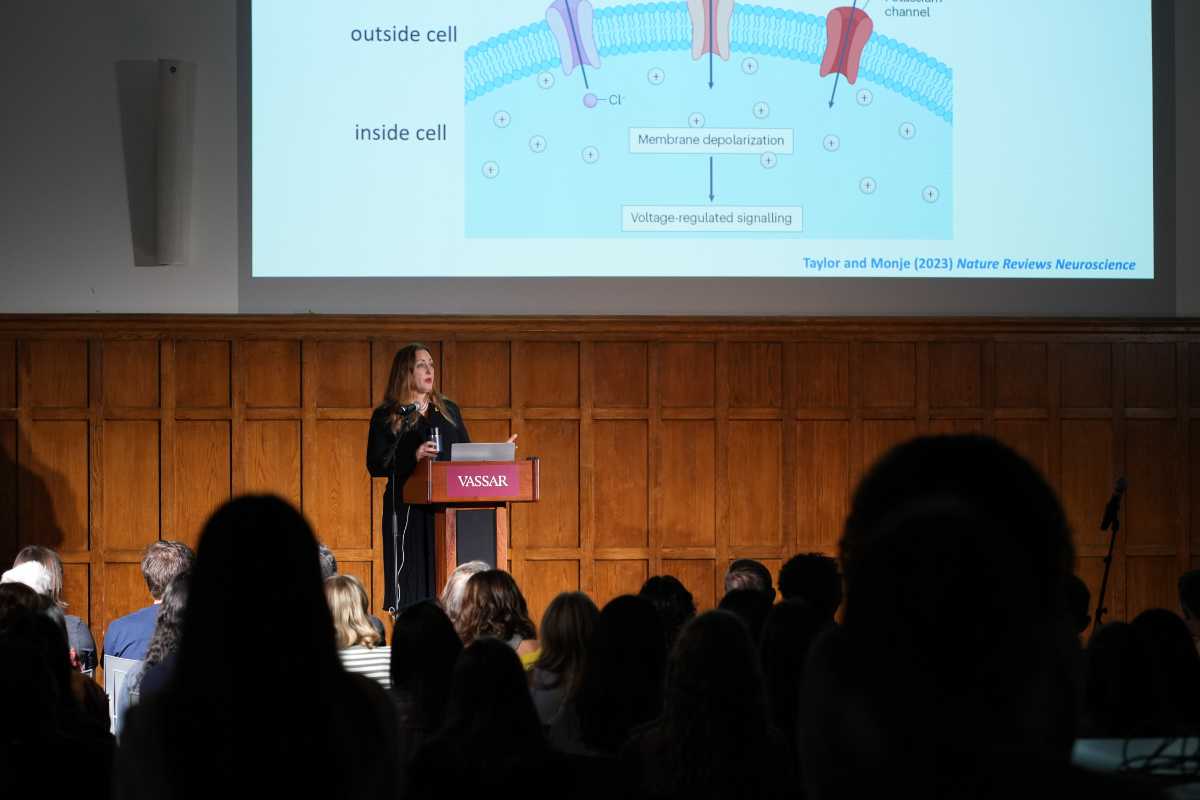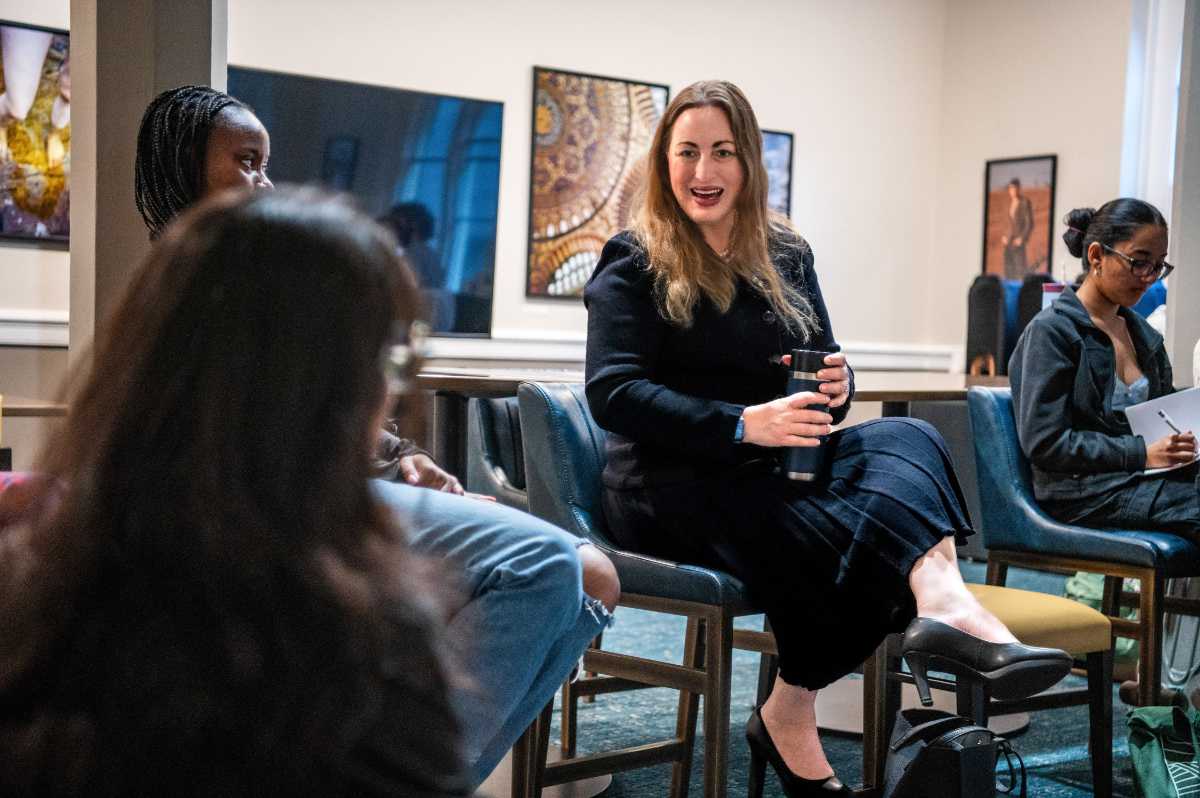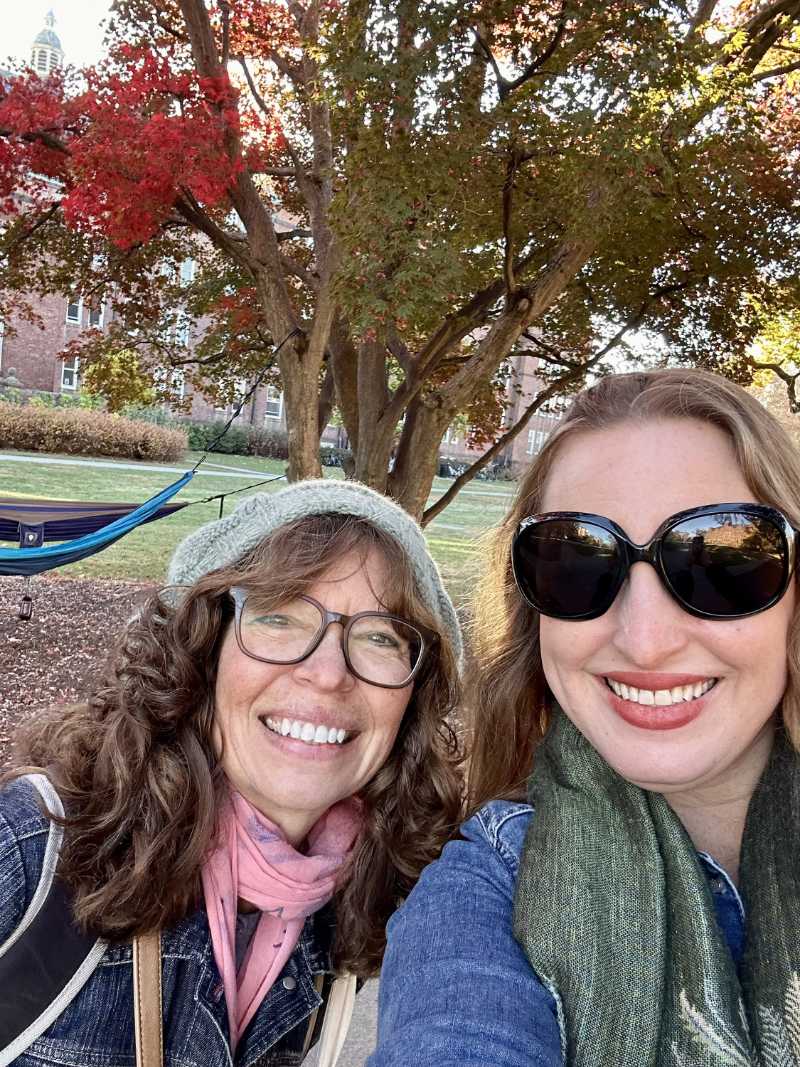‘Genius Award’ Alum Gives Inspiring Talk on Her Work to Cure Pediatric Brain Cancer
When Dr. Michelle Monje ’98, a 2021 recipient of the MacArthur “Genius” award and Professor of Pediatric Neuro-Oncology at Stanford University School of Medicine, was in the latter stages of her medical training in brain cancer neurology, one of her mentors told her that he could tell what kind of cancer children had by simply knowing their age. This got Monje thinking about the stages of brain development and how, perhaps, those very developmental processes might be involved in the start and progression of those cancers.

Photo: Ben Richardson ’25
Monje returned to the Vassar campus on October 24 to deliver a lecture about her work as the winner of the Richard Lounsbery Award, an annual prize given to young (aged 45 and below) French and American scientists to recognize extraordinary scientific achievement in biology and medicine. It is administered in alternate years by the National Academy of Sciences and the French Académie des Sciences. The recipient of the Lounsbery Award chooses where to deliver the lecture, and Monje chose her alma mater.
During her 45-minute talk, Monje took her audience on her journey from the lab bench studies of brain development to clinical trials of new strategies showing extraordinary promise for the treatment and, perhaps one day the cure, of some of the most tragic childhood brain cancers. Seamlessly weaving what she learns from her young patients’ cancers with her lab’s pioneering work understanding how the cells of the brain—neurons, glia and immune cells called microglia—work together to create and strengthen the brain circuits we use to learn and function, Monje’s discoveries have revolutionized both how we think of brain cancer and how we understand our brain’s normal function and development.

Photo: Kelly Marsh
In her earliest work as a young researcher-doctor, Monje said, she and her lab partners discovered that the myelin tracts that speed up our brain processing can change and thicken because the glial cells respond directly to the activity in those brain areas. New glial stem cells are recruited to areas of brain activity and transform into adult glia that cover the active neurons with myelin, to speed up their processing. These processes are what’s happening as children learn complex skills like ice-skating or geometry: Practice makes better and faster. These neuron-glia partnerships continue throughout our lives as we learn new things and develop new skills.
However, Monje explained, sometimes these developing glial stem cells have mutations that convert them to cancer cells, and can lead to tumors called gliomas. She and her teams discovered that those same processes that allow us to learn and hone new skills stimulate the tumor cells to grow, expand and form an interconnected network that feeds off the brain activity. The activity in the brain regions where the cancerous cells lurk is hijacked by the cancer cells, and the more active the brain area, the faster the tumor grows.

Photo: courtesy of the subjects
Using tumor tissue donated by the parents of children with these dangerous cancers, said Monje, her group is figuring out how the brain activity stimulates cancer growth and is developing ways to interrupt the connections between the tumor cells and the neurons, to slow and even halt the tumor growth. They’ve discovered that some of the signaling molecules that interconnect neurons and glioma cells can be influenced by immune cells residing within the brain. As their understanding of this neuro-immune communication advances, Monje said, she and her collaborators are developing immune-based strategies to change the neuron-tumor communication and impede the tumor growth.
Monje credited her creative and insightful approaches to her success as a researcher-clinician to the skills of critical thinking and “following the science” she gained while a student at Vassar. She concluded her lecture by crediting Professor of Biology Kathleen M. (Kate) Susman and others at Vassar with launching her career. When she was in high school, she recalled, she told her biology teacher she was planning to major in biology in college. “My teacher said he didn’t think I had the mind for science,” she said, “but [Susman], who was my pre-major adviser, encouraged me to pursue science, and many of the humanities courses I took also helped me with critical thinking skills that I use all the time.”
Susman called Monje’s work inspiring. “From bedside to lab bench and back again, her research is breaking new ground in both neuro-oncology and brain development neuroscience,” she said. “Her work has created a new branch of study called neuro-immuno-oncology that has led to the creation of a new hospital wing to train new doctors in complex treatments to tackle these tumors. Her lecture showed us the dazzling science behind the therapeutic approaches she is developing and inspired all of us to be open to where our science and our observations may lead us.”
Dr. Monje’s lecture was sponsored by the Biology Department and the Program in Neuroscience and Behavior, and co-sponsored by the Cognitive Science Department, and the Center for Career Education.